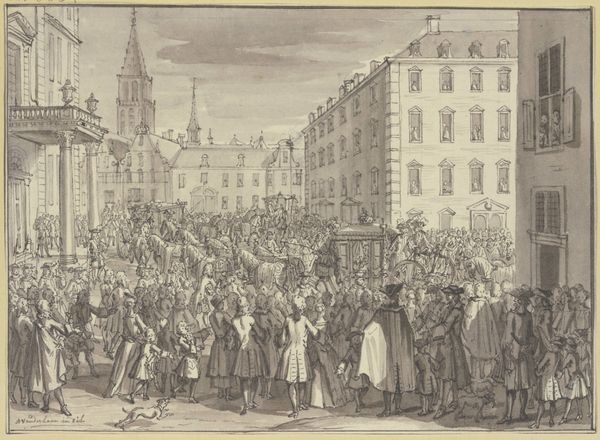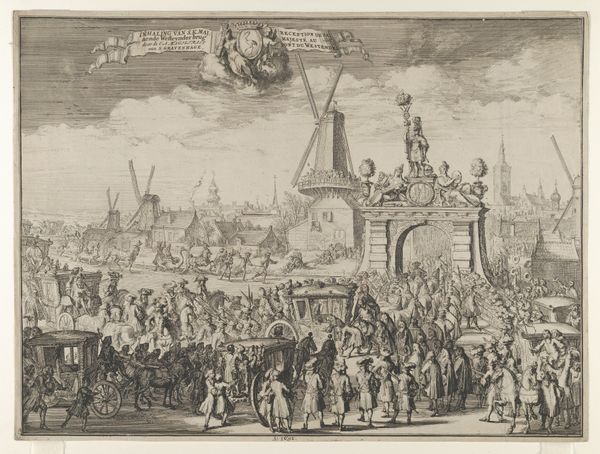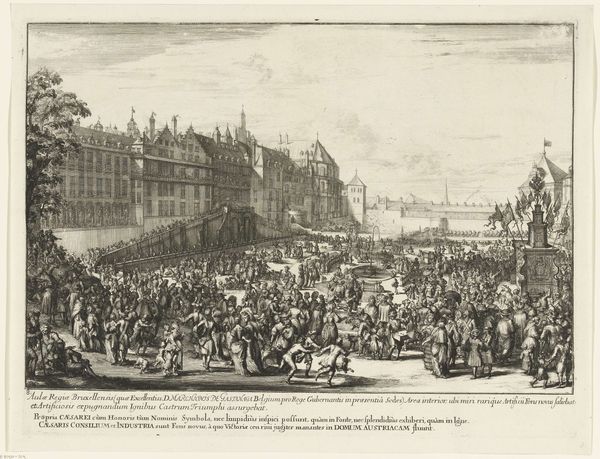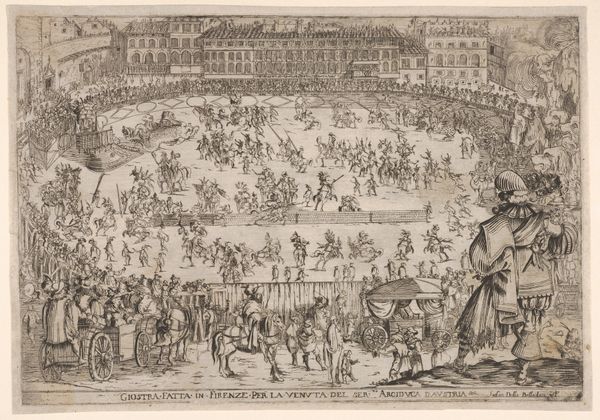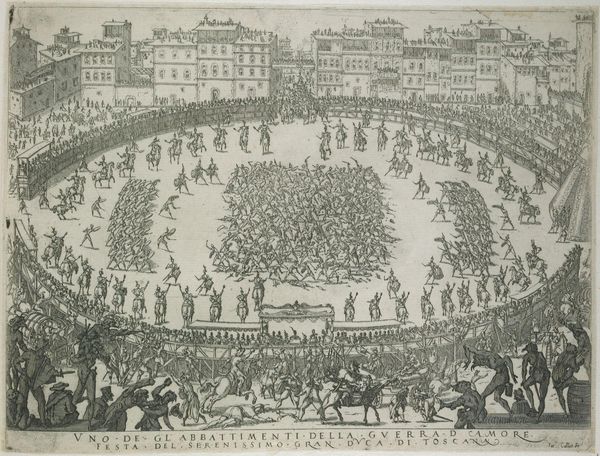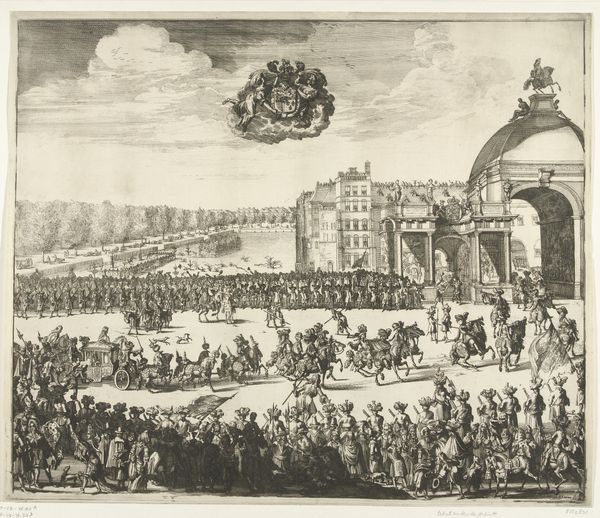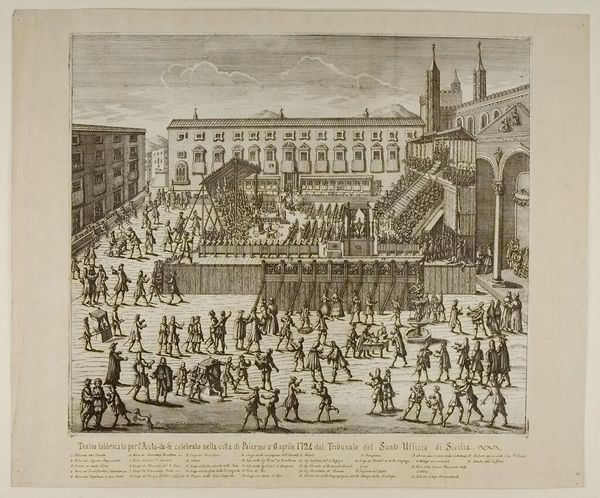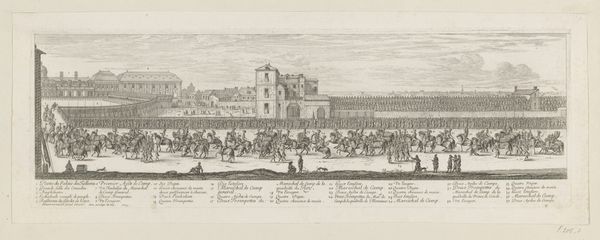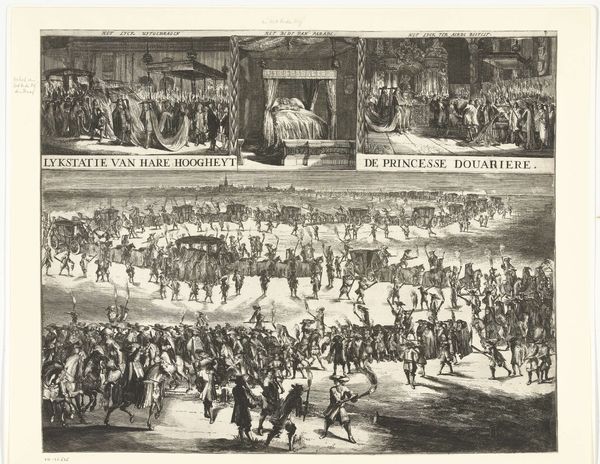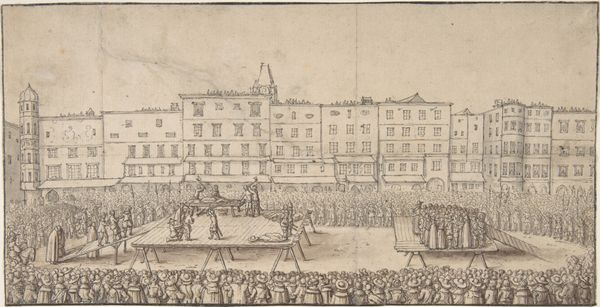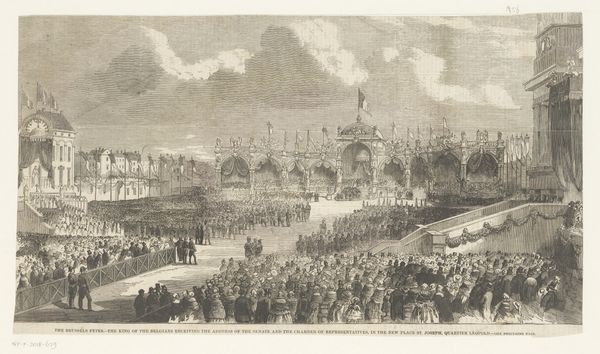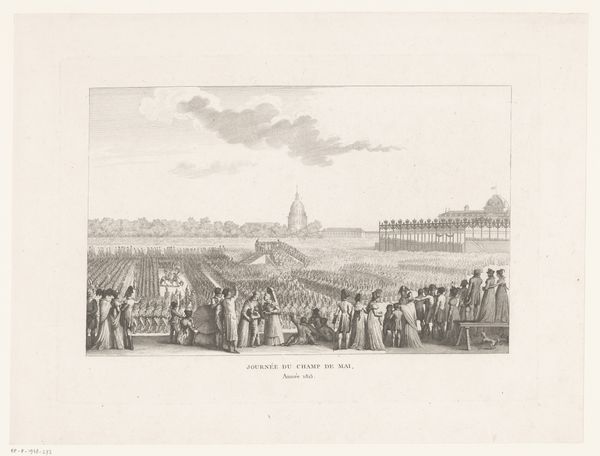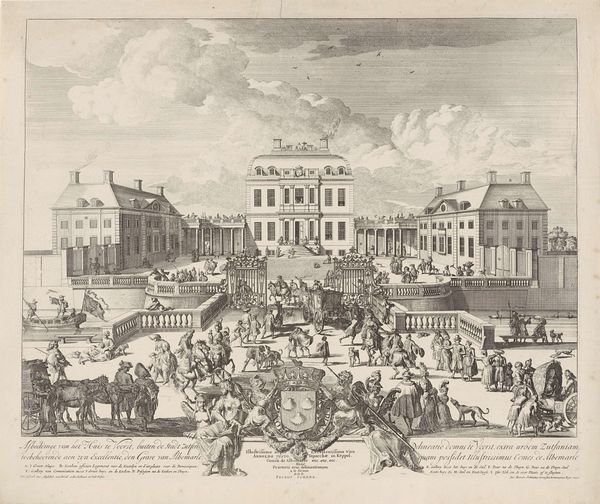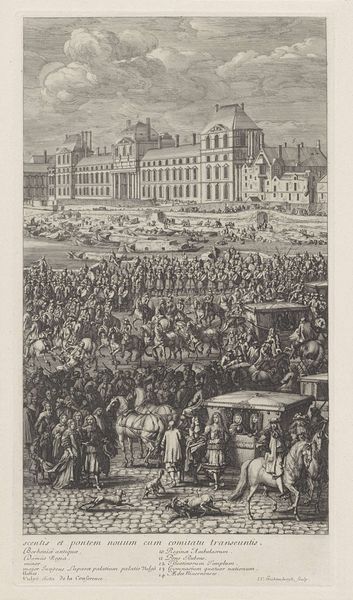
Optocht van Lodewijk XIV, koning van Frankrijk over de Pont Neuf te Parijs 1663 - 1690
0:00
0:00
print, engraving
#
baroque
# print
#
old engraving style
#
cityscape
#
genre-painting
#
history-painting
#
engraving
Dimensions: height 520 mm, width 969 mm
Copyright: Rijks Museum: Open Domain
Curator: Today we’re observing Jan van Huchtenburg’s engraving, "Procession of Louis XIV, King of France, over the Pont Neuf in Paris," likely created between 1663 and 1690. Editor: My immediate impression is of organized chaos, paradoxically. The sheer multitude of figures suggests a teeming, bustling scene, yet the precise lines of the engraving impose a sense of order, almost as if each person and object has been meticulously placed. Curator: Indeed, the Baroque love of spectacle is evident. Look at the artist's use of perspective; the converging lines draw our eye to the figure of Louis XIV, centered beyond the bridge, ensuring the Sun King dominates the composition. It functions almost like a visual manual on hierarchy and space. Editor: Absolutely, it's less about portraying a singular historical event and more about communicating a clear message of power. The Pont Neuf itself, depicted in such detail, is a powerful symbol of royal authority. Bridges, since ancient times, represent connection, progress, but also control, and here, Louis literally strides across it. It's visual propaganda, you might say, meant to impress. Curator: Precisely. Note the architecture depicted—the Louvre, for instance, meticulously rendered. The engraving style provides clean lines to create forms while minimizing shading and value which allows us to discern form clearly through its outline. Editor: I'm drawn to the figures populating the scene. While tiny, they’re so individualized in posture and dress. One has a sense of looking at archetypes as well as individuals. The military leaders in their plumes and fine mounts representing strength. Curator: Semiotically, you are spot on. The very act of turning a political event into a widely distributable print extends its impact far beyond the day of the procession, embedding the image, the ideal of royal authority, into the popular imagination. The details included, like the dogs scuttling in the foreground, could carry varied interpretations across the years, further altering or entrenching our vision of the spectacle being enacted. Editor: Huchtenburg captured not just an image but a potent symbolic moment. Reflecting on it reminds us how symbols shape perceptions and, potentially, control society through cultural memory. Curator: And for me, I value examining the complex compositional and architectural structure informing the creation and visual intention of such a monumental rendering in a small, precise medium like the engraving. It’s an effective translation of symbolic ideology through clear, unwavering form.
Comments
No comments
Be the first to comment and join the conversation on the ultimate creative platform.
